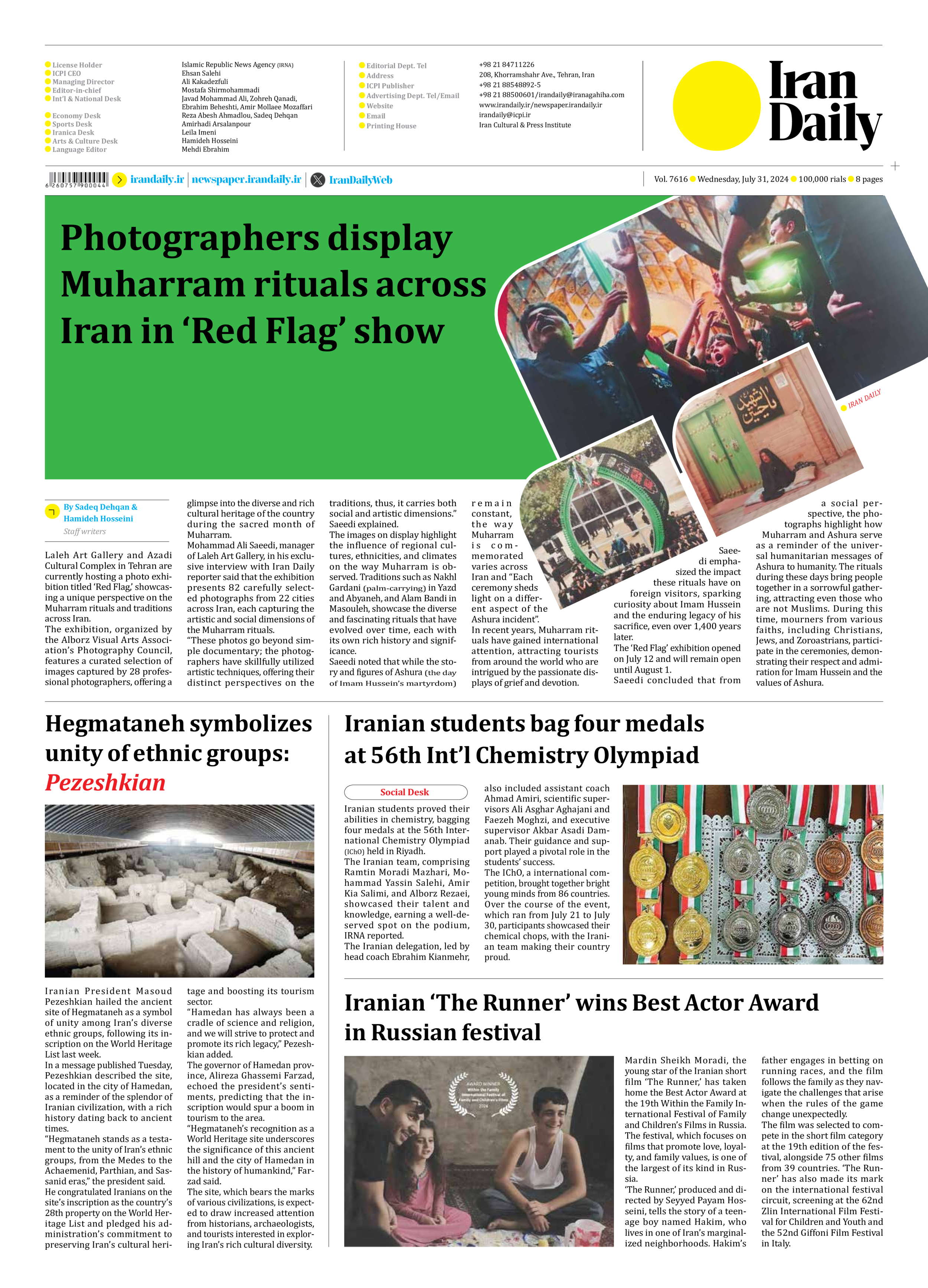
Copy in clipboard...
Photographers display Muharram rituals across Iran in ‘Red Flag’ show
The exhibition, organized by the Alborz Visual Arts Association’s Photography Council, features a curated selection of images captured by 28 professional photographers, offering a glimpse into the diverse and rich cultural heritage of the country during the sacred month of
Muharram.
Mohammad Ali Saeedi, manager of Laleh Art Gallery, in his exclusive interview with Iran Daily reporter said that the exhibition presents 82 carefully selected photographs from 22 cities across Iran, each capturing the artistic and social dimensions of the Muharram rituals.
“These photos go beyond simple documentary; the photographers have skillfully utilized artistic techniques, offering their distinct perspectives on the traditions, thus, it carries both social and artistic dimensions.” Saeedi explained.
The images on display highlight the influence of regional cultures, ethnicities, and climates on the way Muharram is observed. Traditions such as Nakhl Gardani (palm-carrying) in Yazd and Abyaneh, and Alam Bandi in Masouleh, showcase the diverse and fascinating rituals that have evolved over time, each with its own rich history and significance.
Saeedi noted that while the story and figures of Ashura (the day of Imam Hussein’s martyrdom) remain constant, the way Muharram is commemorated varies across Iran and “Each ceremony sheds light on a different aspect of the Ashura incident”.
In recent years, Muharram rituals have gained international attention, attracting tourists from around the world who are intrigued by the passionate displays of grief and devotion.
Saeedi emphasized the impact these rituals have on foreign visitors, sparking curiosity about Imam Hussein and the enduring legacy of his sacrifice, even over 1,400 years later.
The ‘Red Flag’ exhibition opened on July 12 and will remain open until August 1.
Saeedi concluded that from a social perspective, the photographs highlight how Muharram and Ashura serve as a reminder of the universal humanitarian messages of Ashura to humanity. The rituals during these days bring people together in a sorrowful gathering, attracting even those who are not Muslims. During this time, mourners from various faiths, including Christians, Jews, and Zoroastrians, participate in the ceremonies, demonstrating their respect and admiration for Imam Hussein and the values of Ashura.







